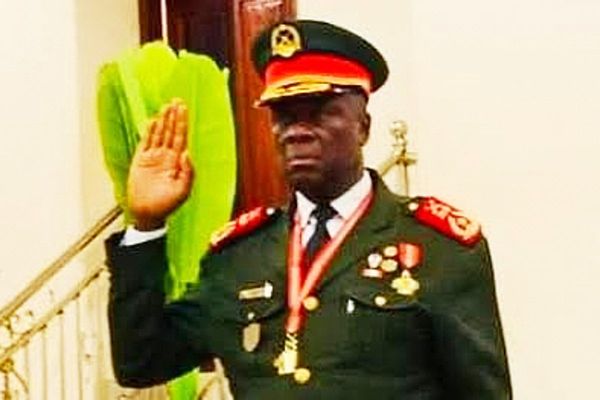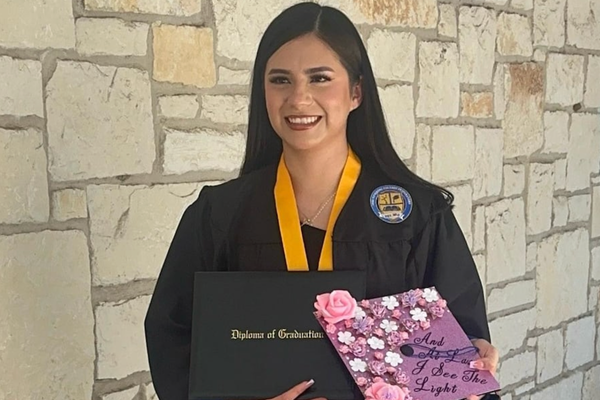
Kate Fullagar, a celebrated historian is sitting in a cafe high above Sydney’s Circular Quay, where the green and gold ferries dock and depart amid that Whiteley-esque vista of azure harbour, totemic bridge and opera house.
On such a fine day the scene seems almost a cliche for its globally recognised picture postcard perfection. The way the urban architectural seamlessly meets the natural at harbour’s edge, it’s as if it were always like this.
It’s hard to imagine what it looked like when Arthur Phillip lived here while establishing the New South Wales colony for nearly five years from 1788, during which he formed a complex relationship with the most important – and misunderstood – local Aboriginal man of his epoch, Bennelong.
“The biggest feat of imagination you need to have is to imagine this whole place back then as forested. Forest was everywhere down there – if you’re walking down to the quay or walking over to the opera house … it’s all walking through thick forest back then. That’s something I’ve thought about a lot more since writing the book,” Fullagar says.

“The book’’ is her latest, Bennelong & Phillip – A History Unravelled, in which – through a novel contemplation of both lives in reverse from death to birth – she brings nuance and perspective to the times and historiography of each.
“When I am here in Sydney I do think about them both a lot – about them being in this place [Gadigal country],’’ says Fullagar, a professor of history at the Australian Catholic University’s Institute for Humanities and Sciences in Canberra.
“I’ve long tried to imagine and figure out where [in nearby Wangal country] … Bennelong was actually born.” Fullagar has settled on Balmain as his likely birthplace. “When I come down here near the quay I think of Phillip being a stranger and Bennelong sort of being a stranger here as well. Both as Gadigal guests.’’
Both were, technically at least (though Phillip didn’t wait for an invitation) guests of the Gadigal when they lived close to the harbour where the quay and those other international landmarks of modernity stand today – and where some of the most historically chronicled and parsed interactions between these men happened.
This is where, for a time, Bennelong was imprisoned in shackles by Phillip, where he dined with the governor and other leading colonists, and lived in a hut on what is now Bennelong Point (supposedly as Phillip’s “guest’’), where once stood giant shell middens that were soon hacked down and used as lime to build the colony.
Today, Bennelong’s name is well known, especially in Sydney. A ferry, a federal electorate on the lower north shore (once held by prime minister John Howard) and a promontory – or “point’’ – upon which the Opera House stands, all bear Bennelong’s moniker. His compelling life – at least a fairly singular version of it – has for the most part defined his characterisation in Australian history and literature, even performing arts.
As the trope would have it, Bennelong was something of a hapless and ineffective emissary between the colonists, led by the supposedly enlightened Phillip, and the various Sydney tribes. Further, his decision to go with Phillip to England for two years when Phillip finished his governorship, failed dismally to engender greater wellbeing for the Indigenes around Sydney and Parramatta as the evils of colonialism continued to violently dispossess and kill more of Bennelong’s countrymen. And, finally, further to the trope, when he returned to Australia, Bennelong died something of an outcast and obstreperous drunk, disrespected by his people – a sad figure who had slipped between two worlds.
On the other hand, Phillip has long emerged in Australian foundation history as a great civiliser – a most humanitarian product of the Enlightenment in his dealings with the Indigenes, whose career pinnacle was the first governorship of NSW.

Fullagar – whose previous work has largely focused on the 18th-century British empire, American First Nations and Pacific Islander people – presents the historical counter-narrative in her elegantly written double-barrelled biography. Through her meticulous research, Fullagar proposes to readers an entirely different portrait of Bennelong as a highly astute and strategic man who died respected and proud among a mob comprising dispossessed people from different parts of the harbour and river, and, conversely, a not so humanly progressive Phillip for whom the governorship of NSW would barely have rated a line on his curriculum vitae.
In Bennelong & Phillip, Fullagar draws the former governor as a very sharp tool of British colonialism, whose time in NSW was just a moment in a very long, dedicated – and well remunerated – global service of the empire.
Fullagar also illuminates other elements of Phillip’s temperament, personality and private life (including about his previously little-known, unorthodox first marriage) history has overlooked.
“The first marriage. I know!’’ 50-year-old Fullagar says with a laugh. “Well a number of hagiographers did know but then they couldn’t deal with it. So, they just go, ‘he was married and then it ended and, and moving right along – then he founded New South Wales’.’’
At 24, the young naval man Phillip married the 42-year-old Charlott Denison. Before the wedding, Fullagar writes, he signed a “marriage settlement … overriding English law at a time in which all of a wife’s wealth was consigned permanently to her husband’’. Fullagar writes that an Anna Maria Cain lived with Charlott and Phillip during the six-year union. When the marriage ended Charlott Denison and Cain cohabited for almost another 50 years. Intrigued? It’s but one of many reasons to read Bennelong & Phillip.
Bennelong’s personal life, including his marriages – and their inter-tribal relevance – are also scrutinised.
To think of Bennelong’s life in terms of modern nomenclature, geography and harbour transport, he was probably born around Balmain, spent his pre-colonial younger years on that peninsula and also about Darling Harbour and Goat Island, both a short water taxi ride away. He died a few ferry stops west through the harbour and up the mouth of the Parramatta River, at Kissing Point. His grave is close to where he died in 1813 (today it is underneath a nondescript suburban nature strip) on land granted to the convict, orchardist and brewer James Squire, where Bennelong spent his final years with the group colonial history for a long time called “The Kissing Point Tribe’’.

“I tried to come to terms with what that meant – to be buried not in his home land, because by then what’s now Balmain and Darling Harbour had been taken over too much and wrecked by colonisation. This ‘tribe’ was a bunch of different clans who had come together and formed a group which, as an historian, makes complete sense in terms of how history actually works, which is that people do actually re-group all of the time for all sorts of reasons,’’ she says.
The release of Fullagar’s book coincided with Australia’s rejection of the referendum proposal for an Indigenous voice to parliament.
In this context Bennelong’s attempted positive engagement with Phillip and the colony and his later decision to turn his back on the colonisers, has significant resonance.
“In his last few years he [Bennelong] knows he’s tried to be a mediator and sometimes earlier on in his life it meant negotiating with colonists. Later on it meant, I think, that he thought the best way to deal with the colonists was to build a firewall against them. But just because he changes strategy doesn’t mean he doesn’t have the same goal – which is the preservation of Aboriginal people,’’ Fullagar says.
The day after Australia voted no Fullagar had an “uncanny moment’’ watching Isabella Higgins, the ABC journalist and Torres Strait Islander woman, explain on television that some Indigenous leaders may turn away from engagement in light of the referendum result.
“We should expect our Indigenous leaders to change their minds about how to achieve their goals in their own lifetimes,” Fullagar says. “Bennelong did. Most leaders in history do.”







